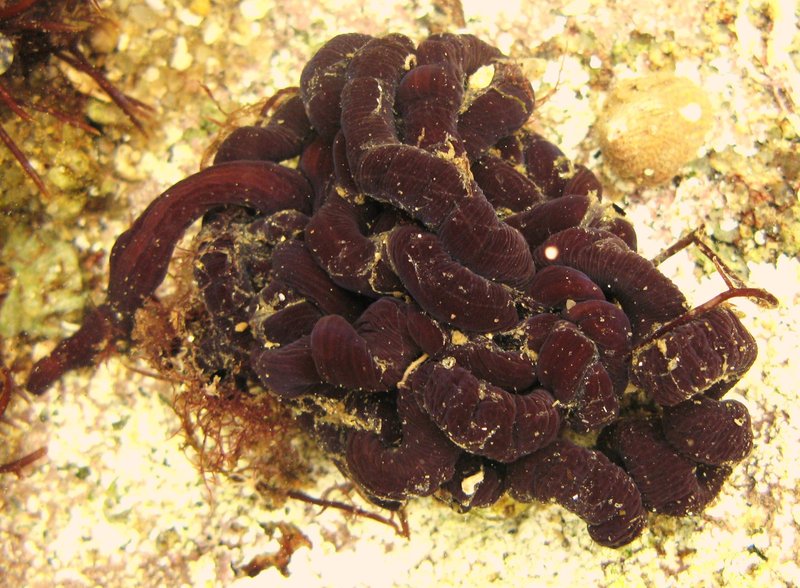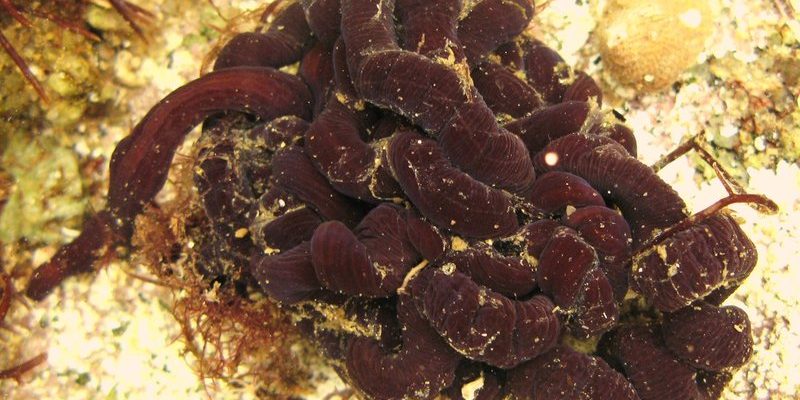
Bootlace worms belong to the **species Lineus longissimus**, and they can grow up to an impressive length, sometimes stretching over a meter! But it’s not their size that makes them special; it’s their role in the environment. In estuarine ecosystems, these worms contribute to nutrient cycling, serve as food for various marine animals, and help maintain the health of the ecosystem. Let’s dive deeper into the world of bootlace worms and understand their vital role in estuarine habitats.
What Are Bootlace Worms?
Bootlace worms are a type of marine worm that can be found primarily in **estuarine environments**. These habitats are where freshwater from rivers meets saltwater from the ocean, creating a unique and often dynamic environment. Bootlace worms thrive in the muddy substrates, making them somewhat of a hidden gem beneath the surface. Their elongated bodies may resemble a bootlace (hence the name), and this peculiar shape aids them in their movement through the sediment.
You might be wondering why they’re so long. Well, this length allows them to burrow effectively and explore the nooks and crannies of their habitat. As they slither through the mud, they play an important role in aerating the soil, which benefits other organisms living nearby. Picture a gardener turning over the soil—bootlace worms do a similar job, ensuring that nutrients are evenly distributed throughout their environment.
Alongside their physical form, it’s worth noting that bootlace worms are **hermaphroditic**, meaning they possess both male and female reproductive organs. This unique trait enhances their reproductive success in the often-changing conditions of estuaries, where finding a mate can sometimes be a challenge.
Ecological Importance of Bootlace Worms
Bootlace worms might not be the most glamorous creatures, but their ecological importance should not be overlooked. They play several crucial roles in estuarine ecosystems, one of which is **nutrient cycling**. As they feed on organic matter within the sediment, they help break it down and make those nutrients available to other organisms. It’s like having a natural compost system right in the mud!
Additionally, bootlace worms serve as prey for various animals, including fish, crabs, and birds. They are a food source that helps sustain larger ecosystems. Imagine a food web—bootlace worms are a vital link in this chain, supporting a diverse array of life in estuarine habitats.
Furthermore, their burrowing activity contributes to sediment turnover, which enhances the overall health of the ecosystem. By mixing the sediment layers, bootlace worms facilitate the growth of beneficial bacteria and other microorganisms that are crucial for maintaining a balanced environment.
Habitat Preferences of Bootlace Worms
Bootlace worms are typically found in **soft sediments** of estuaries, which can include mud, sand, and silt. They prefer areas with plenty of organic material because that’s their primary food source. Think of them as the diners of the estuarine world, always looking for a good buffet of decaying plant and animal matter.
They thrive in both intertidal zones and subtidal areas, which are less exposed to air and have a more stable environment. This versatility helps them adapt to varying conditions within estuaries, whether it’s the ebb and flow of tides or shifts in salinity levels. When conditions change, bootlace worms can move to deeper or more sheltered sediments, showcasing a level of resilience that’s quite impressive.
In addition to sediment type, **temperature and salinity** levels also affect where bootlace worms choose to live. These worms can tolerate a range of conditions, but extreme shifts in temperature or salinity can lead to population declines. This sensitivity highlights the importance of maintaining healthy estuarine environments, where bootlace worms can continue to flourish.
Reproduction and Life Cycle
Bootlace worms have a fascinating reproductive strategy, primarily because they are hermaphrodites. This means that each worm can produce both sperm and eggs, increasing their chances of successfully reproducing. Here’s the thing—when conditions are just right, they can engage in what’s called **cross-fertilization**, where two worms exchange sperm to fertilize each other’s eggs.
After fertilization, the eggs develop into larval forms that eventually settle into the sediment, where they continue to grow. These larvae are often free-swimming before they find a suitable spot to burrow down into the mud. It’s a bit like young fish swimming in schools until they find their own place to call home. Generally, bootlace worm larvae will settle in soft, nutrient-rich areas, which provide them with the resources they need to thrive.
Interestingly, a single bootlace worm can produce thousands of eggs at a time, ensuring that even if some larvae don’t survive, enough will make it to adulthood to sustain the population. This high reproductive rate is crucial in maintaining balance within the ecosystem, especially since bootlace worms share their habitat with various predators.
Threats to Bootlace Worm Populations
Despite their resilience, bootlace worms face several threats in their estuarine homes. One major concern is **habitat degradation**, often caused by human activities such as pollution, development, and climate change. For instance, when pollutants enter estuaries, they can alter sediment composition and quality, making it harder for bootlace worms to thrive.
Another significant threat is **climate change**, which affects water temperature and salinity levels. Rising sea temperatures can disrupt the balance of the ecosystem and lead to a shift in available food sources for bootlace worms. This could push them out of their preferred habitats or reduce their populations, impacting the larger food web.
Finally, coastal development like dredging and construction can physically destroy their habitats, making it difficult for bootlace worms to find suitable places to live and reproduce. It’s crucial for us to understand these threats so we can protect the delicate balance of estuarine ecosystems and ensure that creatures like bootlace worms continue to thrive.
Conservation of Estuarine Ecosystems
Conserving estuarine ecosystems is vital not only for bootlace worms but for all the species that depend on these environments. Protecting these habitats helps maintain biodiversity, which is essential for a healthy planet. Here are a few key strategies for conservation:
- Restoration Projects: Initiatives aimed at restoring degraded habitats can help revive bootlace worm populations.
- Monitoring Water Quality: Ensuring that the waters remain clean and free from pollutants is crucial for the survival of estuarine organisms.
- Sustainable Development: By promoting responsible coastal development practices, we can minimize habitat destruction.
- Community Awareness: Educating the public about the importance of estuaries and their inhabitants can foster support for conservation efforts.
Every little effort counts in preserving these unique ecosystems. By advocating for sustainable practices and supporting conservation projects, we can help ensure that bootlace worms and other vital species continue to flourish in our estuaries.
Bootlace worms may not be the first creatures that come to mind when you think about the ocean, but they play a crucial role in the health of estuarine ecosystems. Their unique adaptations, ecological importance, and fascinating life cycle showcase the beauty of nature’s diversity. By understanding the challenges they face and supporting conservation efforts, we can contribute to the protection of these remarkable ecosystems. So, the next time you’re near an estuary, take a moment to appreciate the hidden wonders beneath the surface—like the bootlace worm, quietly working to keep our environment balanced and flourishing.

